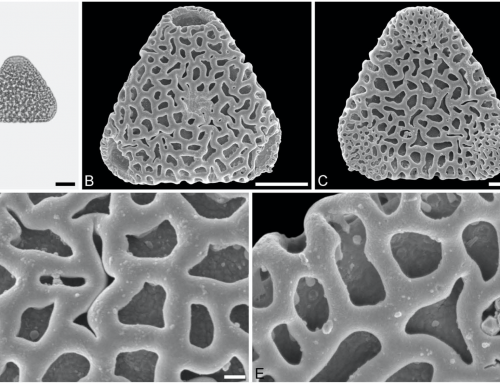Authors: Friðgeir Grímsson, Reinhard Zetter, Qin Leng
The origin and evolution of angiosperms can be unravelled by using fossil records to determine first occurrences and phytogeographic histories of plant families and genera. Many angiosperm families, for example the Onagraceae, have a poor macrofossil record, but are more common in palynological records. Modern Onagraceae produce pollen clearly distinct from that of other angiosperms. Combined morphological features obtained by use of light and scanning electron microscopy have enabled assignment of fossil Onagraceae pollen to extant genera, and therefore tracing of the origin and past distributions of extant Onagraceae lineages. We studied a Miocene palynoflora from the Daotaiqiao Formation of north-east China. Using the singlegrain technique, we examined individual Onagraceae pollen/ tetrads using both light and scanning electron microscopy. Fossil Onagraceae pollen is more frequent than macrofossil remains, but is still rare, and usually represented by a single taxon in palynological samples. Remarkably, samples from the Miocene of north-east China contain five different species: two of Circaea, one of Epilobium, and two of Ludwigia. Such a large number of Onagraceae taxa from a single palynoflora is unknown elsewhere. Whereas Ludwigia pollen is known from Cenozoic sediments of the northern hemisphere, the Circaea pollen is the first fossil pollen assignable to this extant genus. This is also the first fossil record of Epilobium from China. Although the young geological age of this sample does not enable consideration of time of origin for the genera encountered, the co-occurrence of Circaea, Epilobium, and Ludwigia in the mid to late-Miocene of East Asia sheds some light on their phytogeographic histories.




